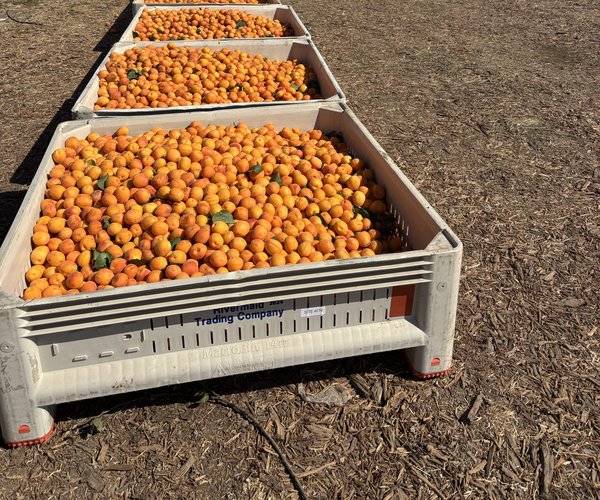Merced County agriculture pulled in nearly $3.5 billion of gross production value last year according to a report released last month, up $240 million from 2019 thanks to a wide variety of successful commodities ranging from crops to livestock.
The Merced County Department of Agriculture report was released last month and reflects a gross value of $3,401,610,000 for the area’s agriculture commodities, up 7% from the previous year’s total. The report also summarizes the county’s total acreage and top-producing commodities.
Though the report does show an increase in gross value for agriculture, Merced County Agricultural Commissioner David Robinson said it’s not necessarily indicative of farmers’ profits — or losses. The report reflects an increase thanks to higher agriculture prices, he said, which farmers also experienced when paying for tools, fuel, protective equipment and more in order to produce their commodities.
“Farmers’ costs went up during COVID,” Robinson said. “They could have made less money this year even though the crop report shows an increase in value.”
The report is generated annually as part of state law, with legislators utilizing the document when deciding on regulations. Realtors, bankers and prospective incoming farmers are all interested in the data, Robinson said, but it also allows counties to see where they rank compared to their neighbors.
The top 10 commodities in Merced County in 2020 were: dairy, almonds, chickens, sweet potatoes, cattle/calves, tomatoes, corn (silage), miscellaneous vegetables, nursery products and eggs.
Milk continues to be Merced County’s leading commodity with an overall gross value of $1,050,940,000. Production of the region’s milk increased by 15% in 2020, and its price increased by $2.30 since last year.
Almonds held steady as the second leading commodity with a gross production value of $470,603,000, which is a 12% increase from 2019. Acreage increased to 103,277, but value prices are down 26% from 2019.
Chickens rose to the number three position with a gross production value of $318,522,000 for 2020. Number of heads increased by 10,421,512 from 2019 and increased $0.03 per value unit.
Although the value and production of milk increased in 2020, cattle and calves moved down two spots to number five with a gross production value of $262,187,000 — a decrease of 13% from 2019. Herd size increased by 62,684, but CWT value decreased by 23%.
“Dairy is so variable, and it has a tough time with production costs. Their value can go way down and they lose a whole lot of money,” Robinson said. “Dairy numbers were up this year, but does that mean the dairymen made good money? Not necessarily.”
The miscellaneous vegetable category moved up three spots to the eighth place. The acreage remained about the same, but the overall value increased by $34,302,000 from 2019. Sweet potatoes moved up to the number four commodity in Merced County, bringing in $269,895,000 for the value total. Production in 2020 increased by 107 cartons per acre and the industry saw prices remain consistent from 2019.
Pima cotton decreased by 6,098 acres, but remained in the thirteenth spot commodity. The price rose to $616.90 per 500-pound bale, which is a 13% increase from 2019.
According to Robinson, drought has already made an impact on the most recent 2020 report and its effects will surely be visible in the next report containing data from 2021. In 2020, the amount of field crop acreage dropped along with precipitation numbers as farmers diverted water to more valuable crops.
“That matches up with what we hear and expect; if you have a limited amount of water and you have almonds and field crops, you’re going to divert your water to the higher value crop,” Robinson said. “We are seeing field crop acreages start to fall, and it will be interesting to see in the 2021 report if that trend continues. I expect that it will.”
To view the 2020 agricultural report, visit www.mercedfarmbureau.org.









